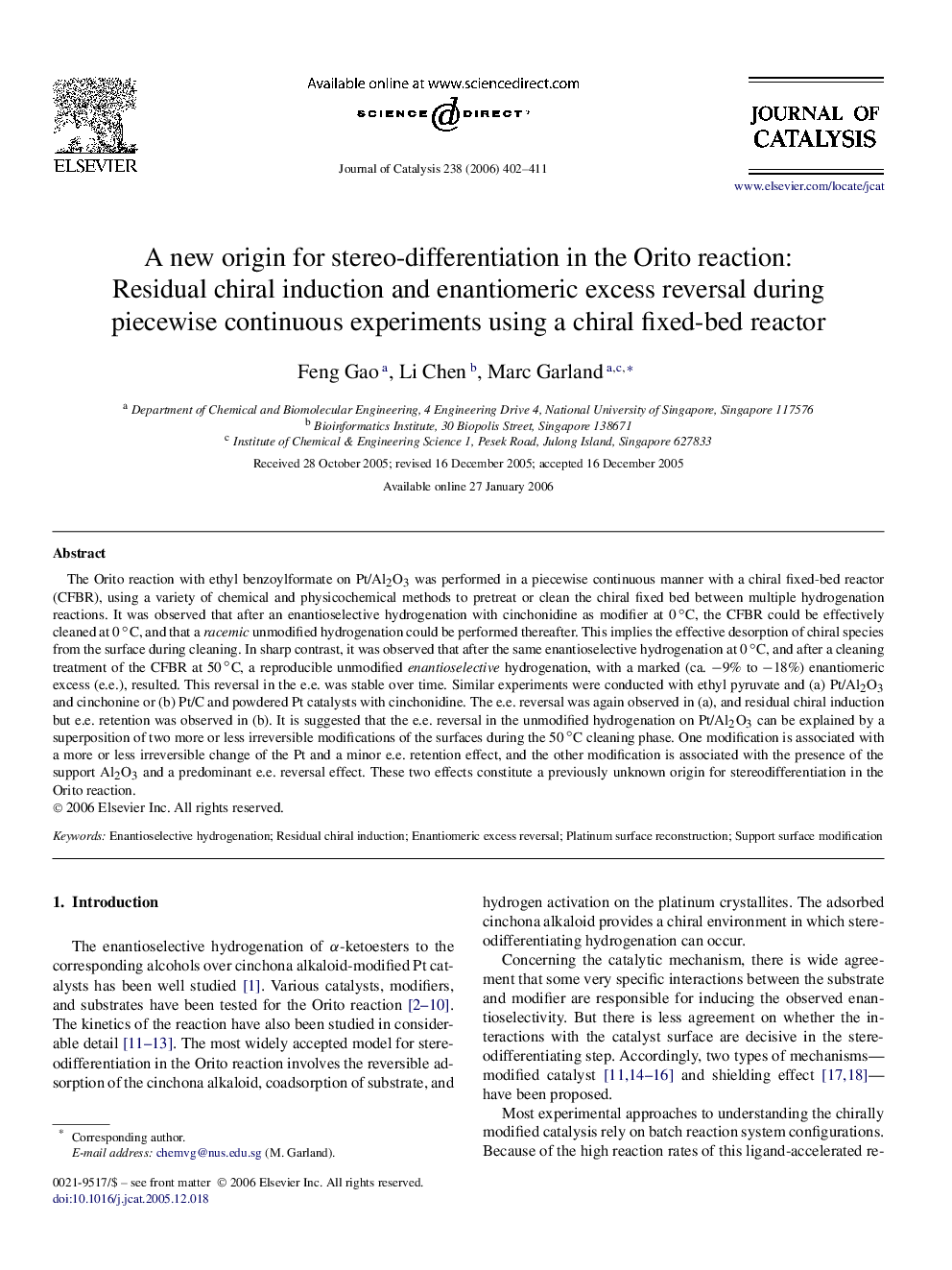| Article ID | Journal | Published Year | Pages | File Type |
|---|---|---|---|---|
| 63228 | Journal of Catalysis | 2006 | 10 Pages |
The Orito reaction with ethyl benzoylformate on Pt/Al2O3 was performed in a piecewise continuous manner with a chiral fixed-bed reactor (CFBR), using a variety of chemical and physicochemical methods to pretreat or clean the chiral fixed bed between multiple hydrogenation reactions. It was observed that after an enantioselective hydrogenation with cinchonidine as modifier at 0 °C, the CFBR could be effectively cleaned at 0 °C, and that a racemic unmodified hydrogenation could be performed thereafter. This implies the effective desorption of chiral species from the surface during cleaning. In sharp contrast, it was observed that after the same enantioselective hydrogenation at 0 °C, and after a cleaning treatment of the CFBR at 50 °C, a reproducible unmodified enantioselective hydrogenation, with a marked (ca. −9% to −18%) enantiomeric excess (e.e.), resulted. This reversal in the e.e. was stable over time. Similar experiments were conducted with ethyl pyruvate and (a) Pt/Al2O3 and cinchonine or (b) Pt/C and powdered Pt catalysts with cinchonidine. The e.e. reversal was again observed in (a), and residual chiral induction but e.e. retention was observed in (b). It is suggested that the e.e. reversal in the unmodified hydrogenation on Pt/Al2O3 can be explained by a superposition of two more or less irreversible modifications of the surfaces during the 50 °C cleaning phase. One modification is associated with a more or less irreversible change of the Pt and a minor e.e. retention effect, and the other modification is associated with the presence of the support Al2O3 and a predominant e.e. reversal effect. These two effects constitute a previously unknown origin for stereodifferentiation in the Orito reaction.
